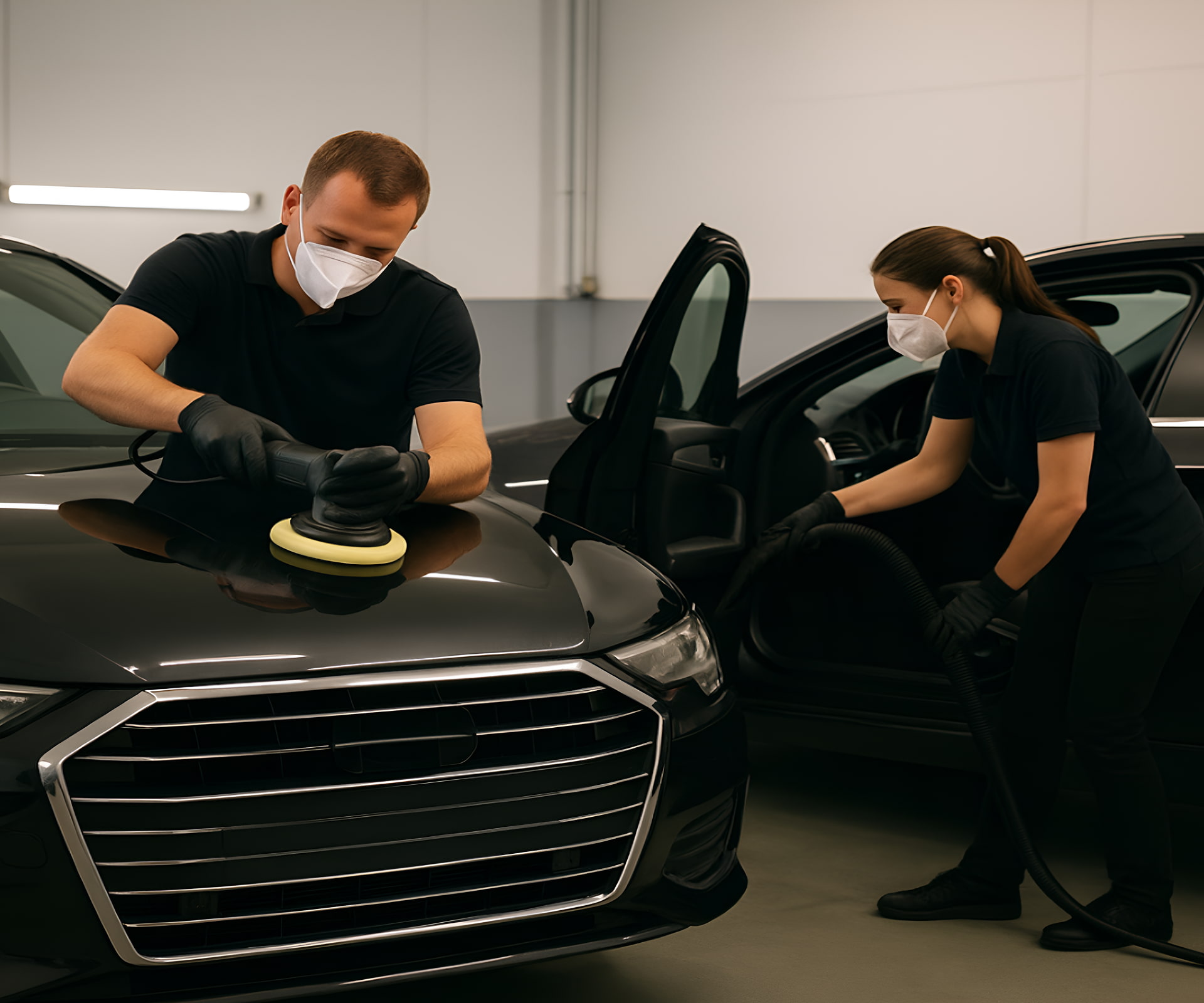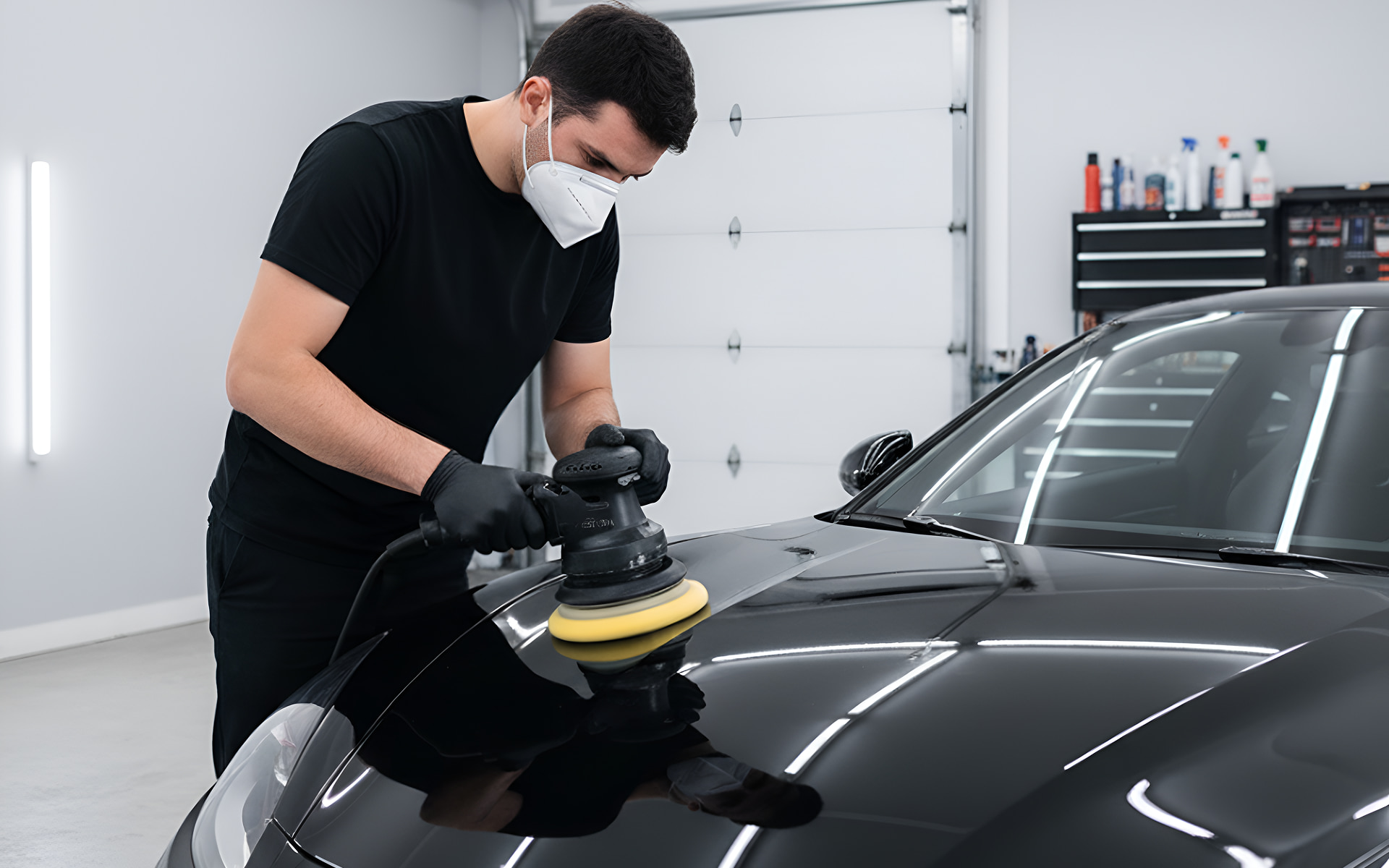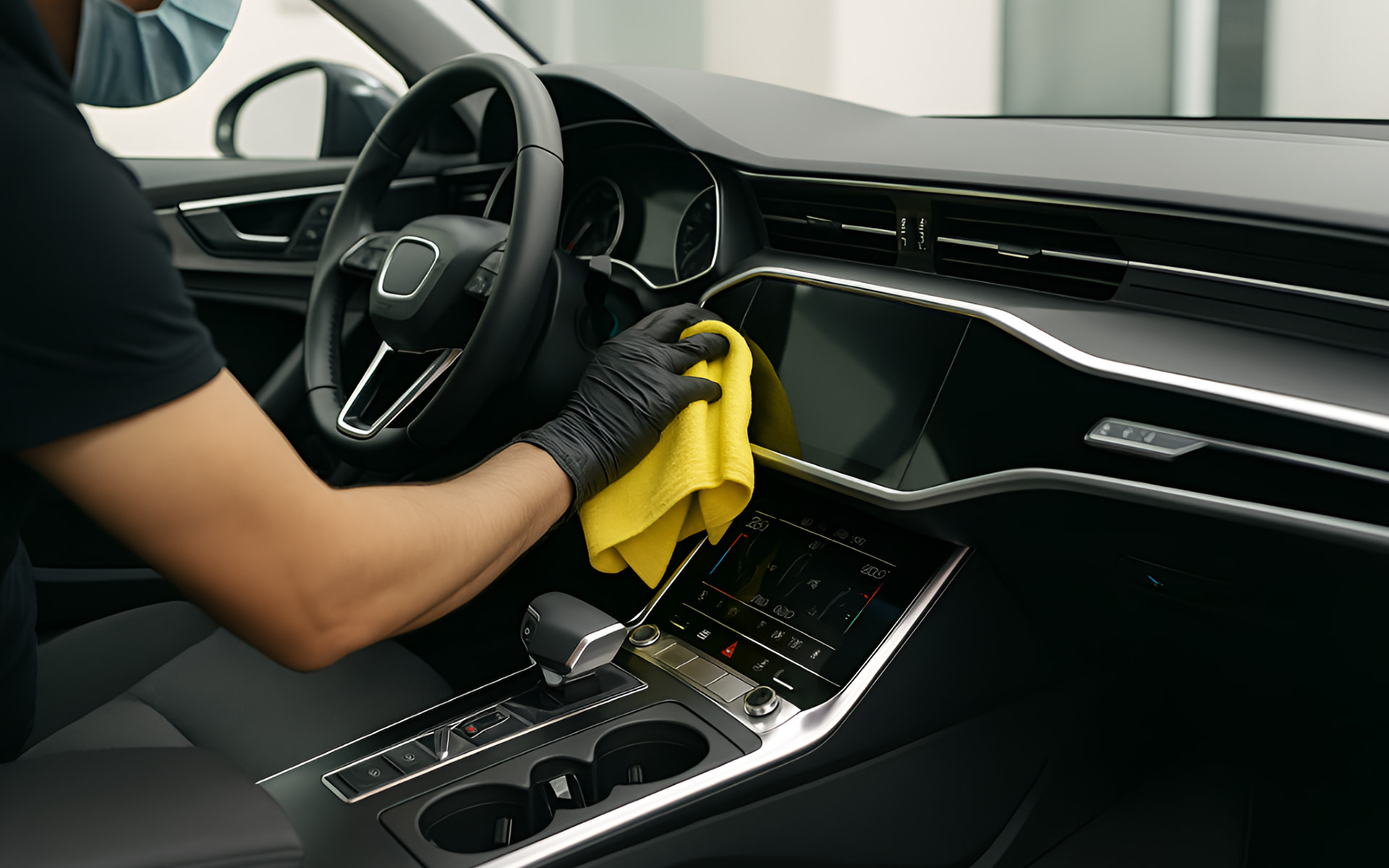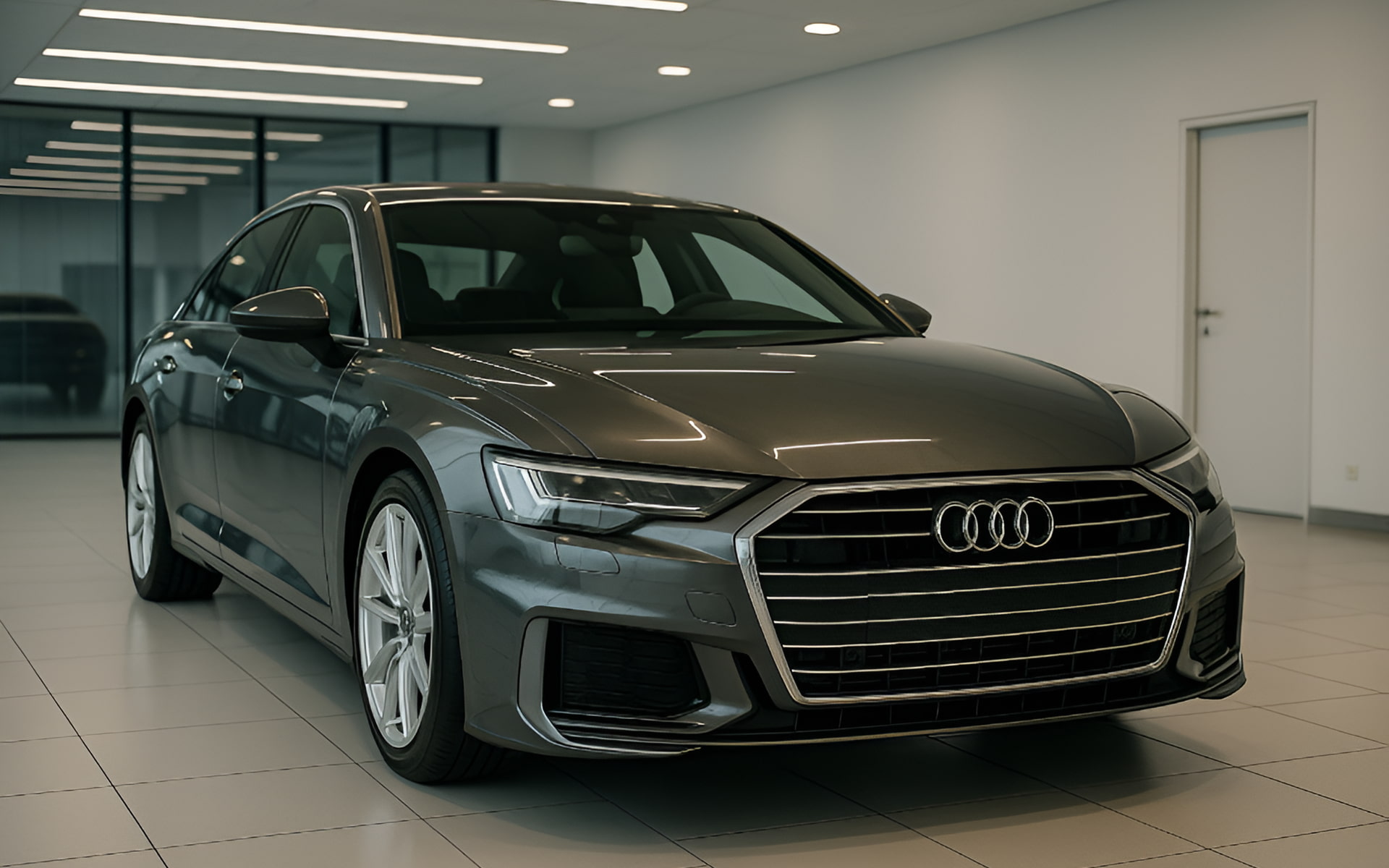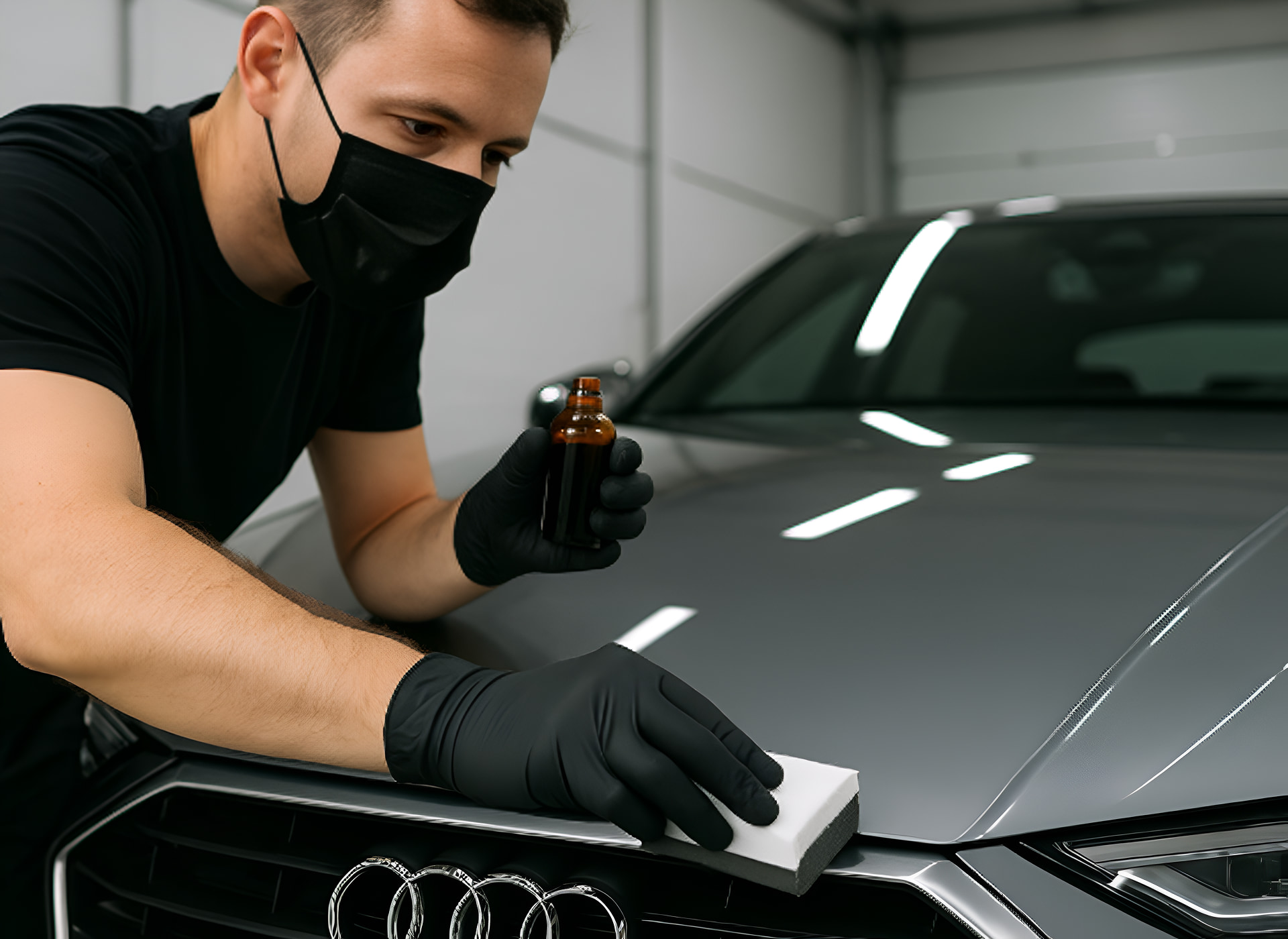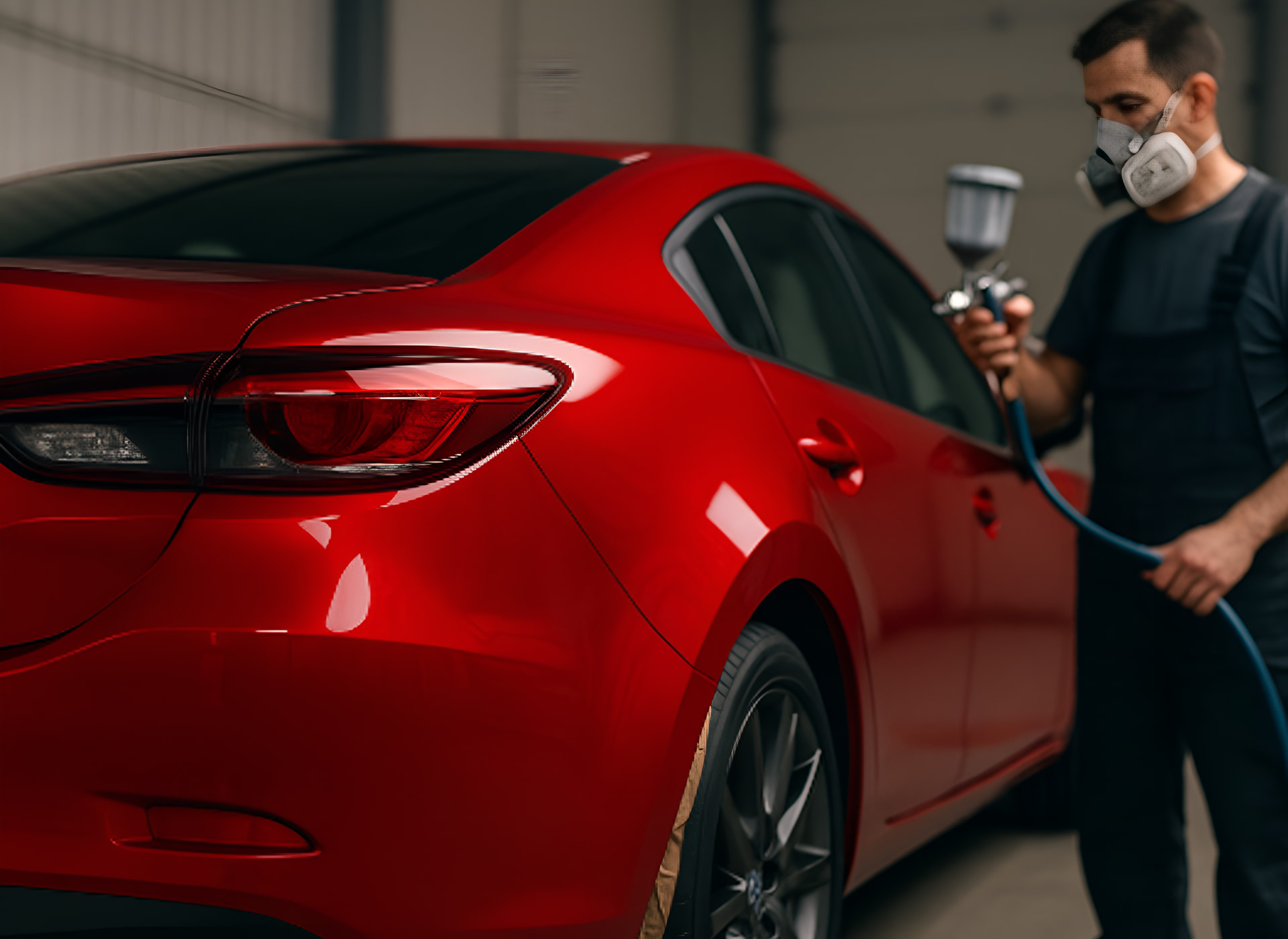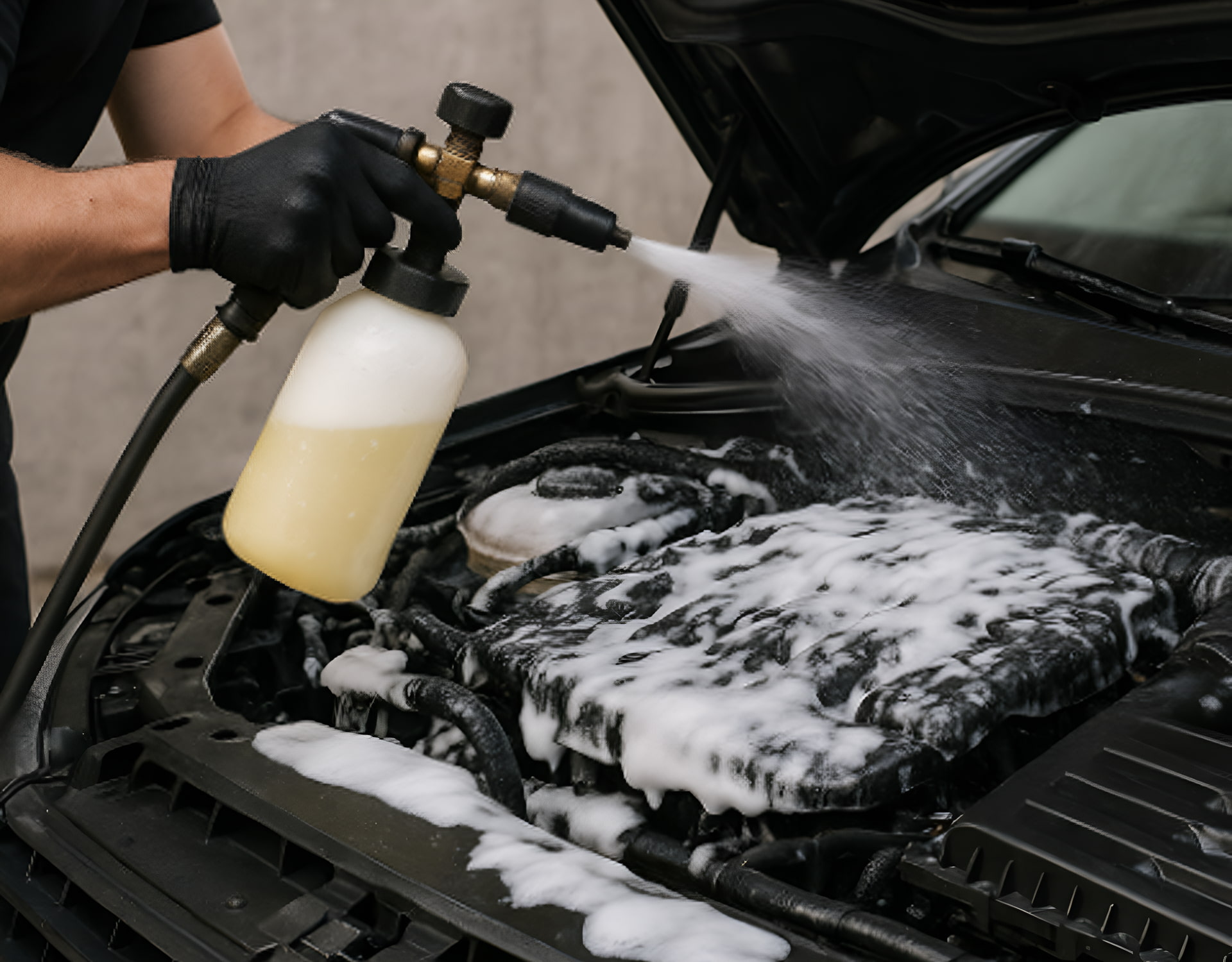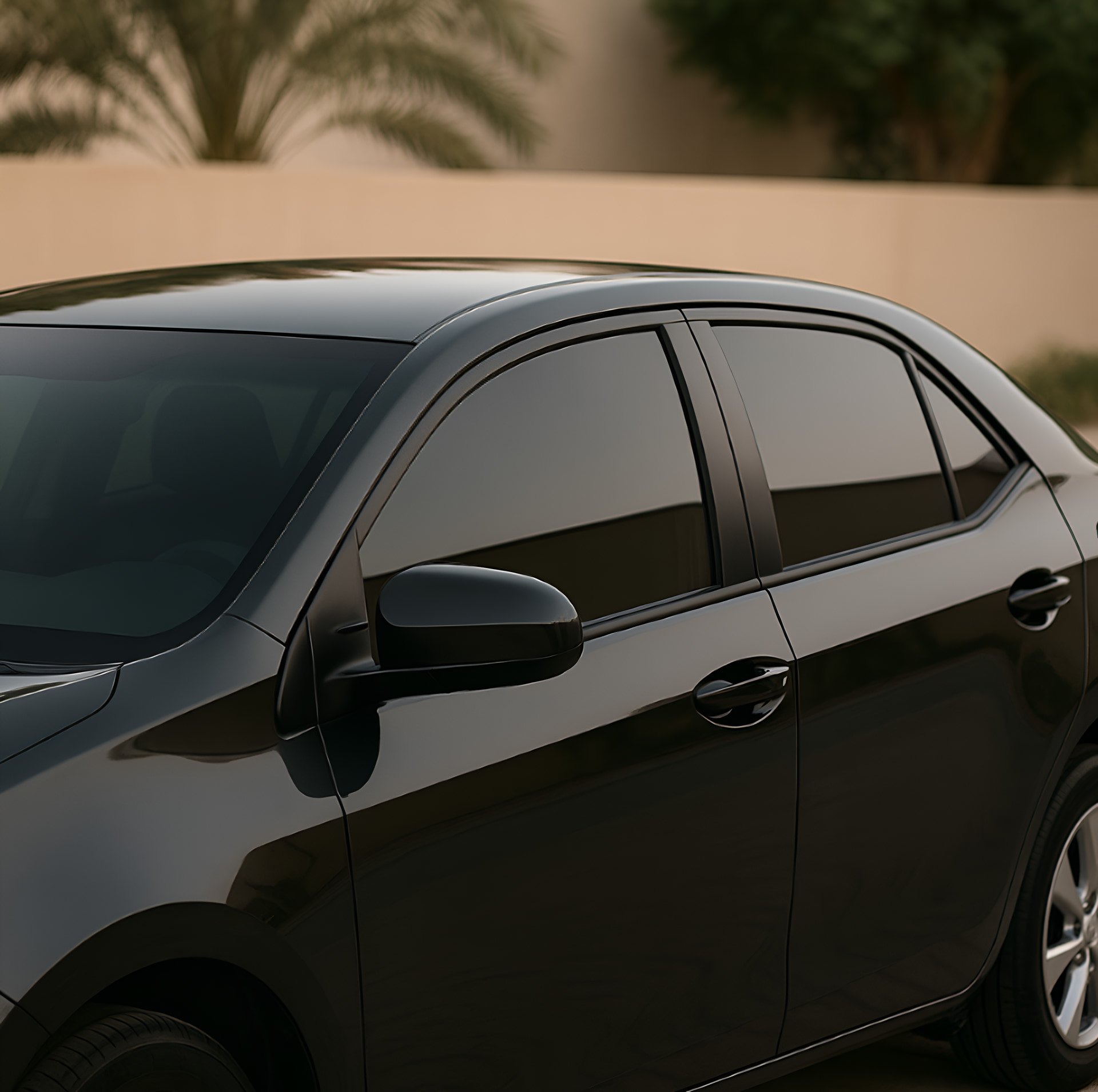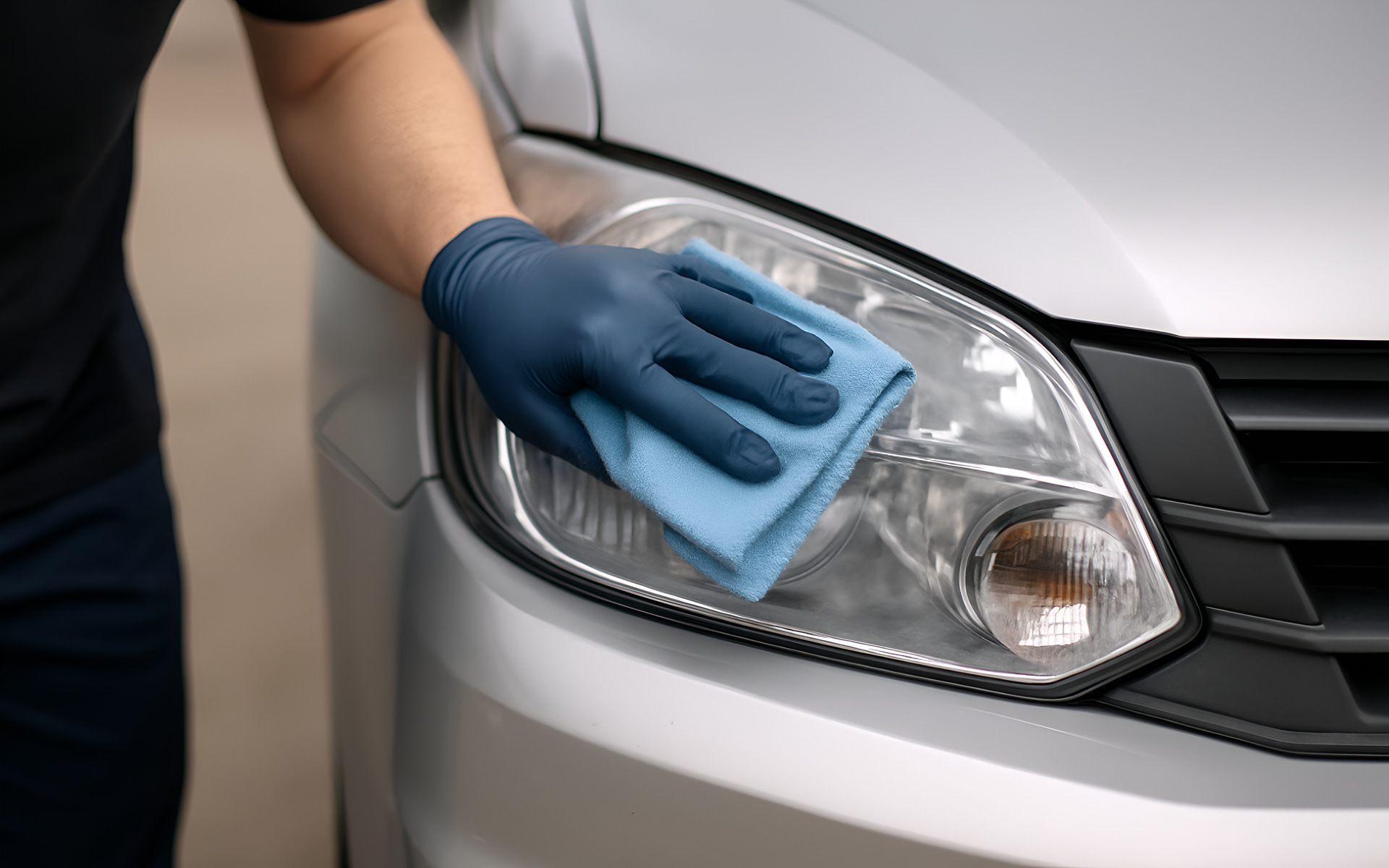Your car’s paintwork is under constant assault. From UV rays that fade its color to rock chips that scar its surface, maintaining that showroom shine is a relentless battle. For car owners seeking to protect their investment, two solutions stand out: Ceramic Coating and Paint Protection Film (PPF). While often mentioned together, they serve distinctly different purposes.
Choosing the right one isn’t about finding the “best” product, but the best product for your specific needs. This guide will break down the key differences, benefits, and ideal use cases for each, empowering you to make an informed decision to keep your car looking pristine.
What is Paint Protection Film (PPF)?
Paint Protection Film is a clear, urethane-based shield applied directly over a vehicle’s painted surfaces. This tough but flexible layer is specifically designed to absorb the impact of stones, gravel, and other road debris that could otherwise chip or scratch the paint.
Acting like a transparent armor, PPF preserves the car’s factory finish without changing its appearance. It is ideal for high-impact areas such as bumpers, hoods, and side mirrors, providing long-term defense against physical damage while maintaining the vehicle’s original color, gloss, and overall resale value.
What is Ceramic Coating?
Ceramic coating is a liquid polymer that chemically bonds with the vehicle’s paint, creating a durable, semi-permanent layer. Once cured, it offers powerful protection against UV rays, chemical stains, and environmental contaminants like bird droppings or tree sap.
Unlike PPF, ceramic coating does not stop rock chips but excels at preventing oxidation and making cleaning easier. Its slick, hydrophobic surface repels water, dirt, and grime, while adding a deep, reflective shine. The result is a low-maintenance, glossy finish that keeps the car looking freshly detailed for years.
How Does Paint Protection Film Work?
Understanding PPF Technology
Modern PPF is a marvel of engineering. It’s a thermoplastic urethane film that is meticulously applied to the painted surfaces of your vehicle. The best versions on the market today are incredibly durable, often self-healing, and optically clear.
Key Advantages of Choosing Paint Protection Film
Discover the top reasons PPF is the ultimate shield for preserving your vehicle’s paint.
Superior Impact Resistance
Paint Protection Film acts as a tough, transparent shield that absorbs rock chips, gravel strikes, and minor abrasions. This strong physical barrier prevents paint damage on vulnerable panels such as bumpers, hoods, and side mirrors, maintaining your car’s flawless exterior and long-term value.
Self-Healing Surface
Many high-end PPF products feature an advanced top layer that self-heals light scratches and swirl marks with mild heat from sunlight or warm water. This constant self-repair keeps the surface smooth and fresh-looking without frequent polishing or extra maintenance.
Protection from Chemical Stains
Premium PPF defends against harsh environmental contaminants like bird droppings, bug splatter, road salt, and tree sap. Its stain-resistant properties prevent etching and discoloration, ensuring your vehicle’s paint stays vibrant and free from unsightly marks even in challenging driving conditions.
Preserves Resale Value
By safeguarding the factory paint beneath, PPF directly enhances resale appeal. A chip-free finish signals meticulous care to potential buyers, allowing you to command a higher selling price and protect your investment for years to come.
Who Should Consider Paint Protection Film?
PPF is the ideal choice if your primary concern is physical damage. It is highly recommended for the entire front end of any car driven on highways. It is also perfect for rocker panels and areas behind the wheel wells to guard against kicked-up debris. Owners of high-value vehicles where preserving original paint is critical for resale will find immense value in PPF. Drivers who frequently encounter construction zones or gravel roads should also strongly consider this investment.
How Does a Ceramic Coating Work?
A ceramic coating is a liquid polymer applied to your car’s paint, wheels, or trim. Once cured, it chemically bonds with the factory clear coat to form a semi-permanent, transparent layer. This hardened layer repels water, dirt, and chemical contaminants, making the surface hydrophobic and easier to clean.
It also blocks harmful UV rays, preventing oxidation and fading, while adding a deep, glossy shine. Unlike wax, which wears off quickly, a quality ceramic coating lasts for years, protecting against stains, bird droppings, and minor scratches while maintaining a sleek, showroom finish with minimal maintenance.
The Key Advantages of Choosing a Ceramic Coating
Find below the standout benefits that make ceramic coating a smart, long-lasting solution for protecting and enhancing your vehicle’s paint.
Hydrophobic and Easy to Clean
Ceramic coating forms a slick, water-repellent surface so rain and dirt slide off effortlessly. This reduces washing time and helps maintain a spotless, polished look with minimal effort, keeping your car cleaner between washes.
Chemical and Contaminant Resistance
The hardened layer shields paint from damaging elements like bird droppings, bug splatter, tree sap, and harsh road salts. Its chemical resistance prevents etching or staining, ensuring the finish stays smooth and unblemished even in tough environmental conditions.
UV Protection for Lasting Color
Quality ceramic coatings contain UV blockers that protect against sun damage. They prevent oxidation and fading, keeping your car’s paint vibrant and glossy for years, even under relentless sunlight or high-heat climates.
Deep Gloss and Reflective Finish
Beyond protection, ceramic coating dramatically enhances the depth and clarity of your car’s paint. The result is a showroom-quality gloss and mirror-like reflectivity that provides a long-lasting, luxurious appearance without frequent waxing or polishing.
Who Should Consider a Ceramic Coating?
A ceramic coating is perfect for the car owner who is meticulous about maintenance and wants to keep their vehicle looking its best with less effort. It is ideal for primarily garage-kept vehicles and face minimal risk of rock chips but are still exposed to environmental contaminants. Anyone seeking to enhance the gloss and depth of their paint while adding a layer of chemical protection will benefit greatly from a ceramic coating.
Can You Combine PPF and Ceramic Coating?
Find below how pairing these two technologies delivers unmatched impact resistance, chemical protection, and long-lasting showroom gloss for your car.
The Ultimate Protection Strategy
For the ultimate in paint protection, you do not have to choose. The most comprehensive solution is to combine both products. The most common and effective method is to apply Paint Protection Film to the high-impact areas of the car—the full front end, mirrors, and rocker panels. Then, a ceramic coating is applied over the entire vehicle, including over the PPF. This combination provides a complete defense system.
Benefits of the Combined Approach
This approach guarantees physical protection where you need it most from PPF. The ceramic coating on top adds incredible slickness to the PPF, making it even easier to clean and providing an extra layer of UV protection. The coating then protects the rest of the car’s painted surfaces from chemical damage and adds uniform gloss, creating a seamless, showroom-quality finish across the entire vehicle.
How Do I Make the Right Choice for My Car?
Your decision should be based on your driving habits, budget, and goals for your vehicle. Consider Paint Protection Film if your main concern is preventing rock chips and physical scratches from road debris. This is a must for daily drivers and highway commuters. Consider a Ceramic Coating if your paint is already in great condition and you want superior chemical resistance, easier maintenance, and enhanced gloss without the need for frequent waxing.
For the absolute best protection, invest in both. Apply PPF to high-impact zones and cover the entire car, including the PPF, with a ceramic coating.
Conclusion:
Choosing between Paint Protection Film and Ceramic Coating depends on how you drive, where you park, and how much effort you want to spend on maintenance. PPF is unbeatable for shielding against chips and scratches, while ceramic coating excels at chemical resistance and a deep, lasting gloss.
For the strongest defense, many owners wisely combine both solutions for complete impact protection and an easy-to-clean, mirror-like finish. For expert application of PPF and ceramic coating services in Sharjah, trust Monza Auto Care for professional installation and long-lasting results. Contact Monza Auto Care today at +971 554 24 2600 or email us at monzaautocare@gmail.com. Visit us at 125 Street, Industrial Area 15, Sharjah for expert car services.
Frequently Asked Questions
What lasts longer, ceramic coating or PPF?
A high-quality ceramic coating can last between 2 and 5 years, while a premium PPF installation typically lasts 5 to 10 years. Both offer exceptional long-term protection for your vehicle’s exterior surfaces.
Can ceramic coating prevent rock chips?
No, a ceramic coating cannot prevent rock chips. It is designed for chemical protection and ease of cleaning. For physical impact resistance against stones and debris, Paint Protection Film (PPF) is the necessary solution.
Which option is more expensive, PPF or ceramic coating?
PPF is generally more expensive due to higher material costs and the labor-intensive installation process. A full front PPF application typically costs more than a full-body ceramic coating.
Is a ceramic coating applied over PPF?
Yes, applying a ceramic coating over PPF is highly recommended. It adds hydrophobic properties, makes the film easier to clean, and provides an additional layer of UV protection, enhancing the overall durability of the PPF.
Do I need to wax my car if it has a ceramic coating?
No, a ceramic coating eliminates the need for traditional wax. The coating itself provides a long-lasting protective layer. However, using a ceramic coating booster spray every few months is recommended to maintain its hydrophobic effects.

